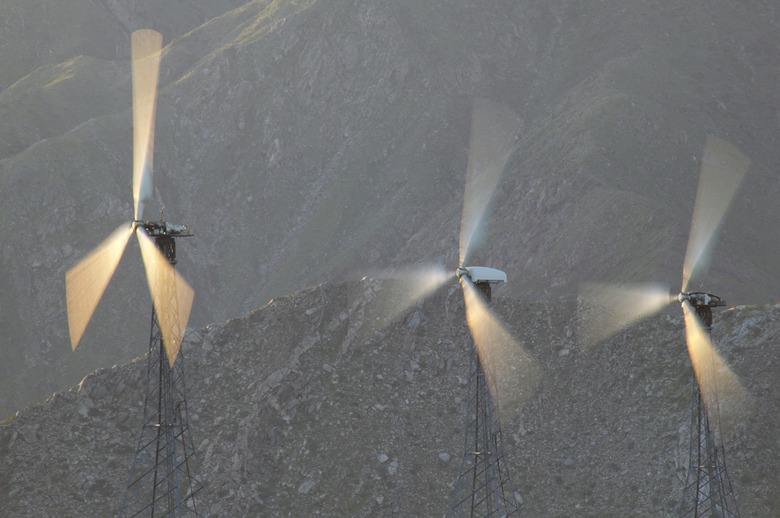How To Use A Treadmill Motor For A Wind Generator
Treadmill motors are popular for small wind generators because they are rugged, widely available and inexpensive when purchased used. They are permanent magnet motors, which means they work as generators when turned and output direct current that can then be used to charge batteries. While these motors are typically rated at more than one horsepower, that rating is at several thousand rpm. Small wind generators typically turn at a maximum speed of several hundred rpm so that the output declines to 200 or 300 watts.
Step 1
Find a suitable treadmill motor. Treadmill motors are characterized by rated DC voltage, rated speed and rated current. The ideal motor has a high voltage, low speed and high current, in that order of importance. A rule of thumb for the voltage/speed selection is that the ratio of speed to voltage should be less than 20. Divide the speed by the voltage. This is the motor speed that will generate 1V. For a ratio of 20, the motor will generate 15V at 300rpm. This is about the lower limit for battery charging, so ideally a lower ratio or a faster-turning wind turbine will be needed. Once the voltage has been calculated, the rated current times the voltage will give the power.
Step 2
Decide on the physical arrangement of the wind generator. Treadmill motors are not weatherproof, so they are often placed inside PVC pipes for protection. Motor cooling must be ensured, and the wind turbine blades must be attached.
Some treadmill motors have a flywheel to which the turbine blades can be attached. Others have a threaded shaft, which will allow the mounting of a hub to which blades can be bolted. Some designers have used a saw blade mounted between two nuts on the shaft for this purpose.
Treadmill motors in wind generators spin far below their rated speed and therefore produce much less power than they could. To increase the speed of rotation, some designs use pulleys and belts. A large pulley mounted on a separate wind turbine shaft with a belt driving a small pulley on the treadmill motor shaft will greatly increase the speed of rotation of the motor. The speed increase is the same as the ratio of the diameters of the pulleys. A shaft with a 4-inch pulley will drive a shaft with a 1-inch pulley at four times the speed.
Step 3
Connect the wind generator to the batteries. Treadmill motors generate DC at a voltage suitable for charging batteries. The power from the batteries can then be run through an inverter to power household lights and small loads. The system will also need a diode to prevent the batteries from running the wind turbine as a motor when there is no wind and as a means of dumping any excess power. One way to take care of these requirements is to install a voltage controller, which will regulate the voltage and protect the batteries from overloading. These small treadmill motor-based wind generators are good at charging batteries and running small loads, but they don't produce enough power to make it worthwhile to connect them to the grid.
Cite This Article
MLA
Markgraf, Bert. "How To Use A Treadmill Motor For A Wind Generator" sciencing.com, https://www.sciencing.com/use-treadmill-motor-wind-generator-7704417/. 24 April 2017.
APA
Markgraf, Bert. (2017, April 24). How To Use A Treadmill Motor For A Wind Generator. sciencing.com. Retrieved from https://www.sciencing.com/use-treadmill-motor-wind-generator-7704417/
Chicago
Markgraf, Bert. How To Use A Treadmill Motor For A Wind Generator last modified March 24, 2022. https://www.sciencing.com/use-treadmill-motor-wind-generator-7704417/
